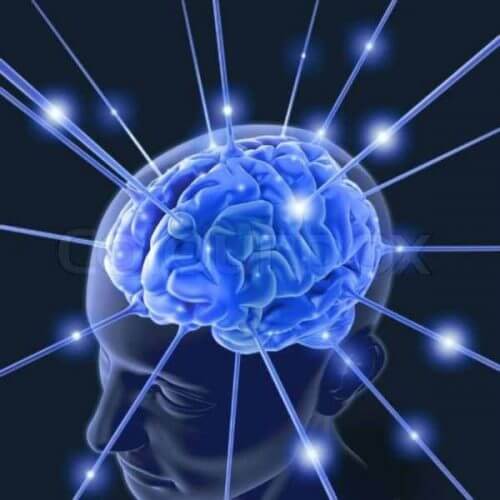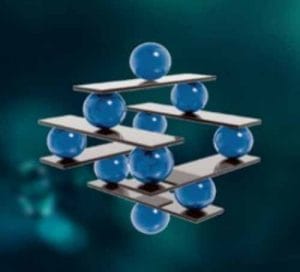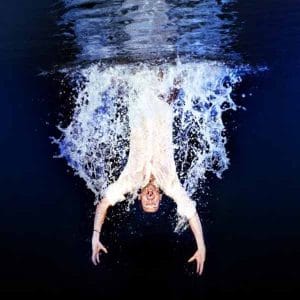
In the previous article, we looked at the foundation of all healings. We found that the key lies not in the technique itself, but in our attitude towards it. One technique is not more effective than another, but it is about the harmony between the technique, the practitioner and the help-seeker.
Various techniques, some of them very “unusual”, have proved effective throughout history. Even those whose effect cannot be explained by logical facts. The American healer Burt Goldman (“American Monk”), mentioned in the previous article, once said: “Someone convinced me that in order to heal a certain part of the body, you had to ‘tap’ on the right hand, otherwise there would be no healing. To prove to him how little the technique itself mattered, I cured a person with this health problem by tapping on his left big toe!”
Let’s take a look at some practical tips to help us choose a technique, or to help a technique we may already be doing have an even better effect on us.
How to make a technique really help you
So the key to success lies in four things:
- A qualified healer or practitioner who has proven that his method works, while at the same time expressing unwavering faith that it can help you; not doubting in the slightest that it would not work for you. On the contrary, he thinks it would be a greater miracle if it did not help you.
- Your faith in the provider.
- Your faith in the method or technique you are using.
- Your faith that the method will help you too.

When we can express a strong belief in all this, we simply believe that we are on the verge of a solution; the cure will happen and we need nothing more than the time invested. Everything else is taken care of.
You could also say that we believe in healing, and this energy is so close to us that it has become a given. So – after the doubt and/or worry about whether or not we will be healed – the exciting anticipation of what will happen disappears, because our minds are already elsewhere.
This is a sign of true faith: withdrawing your energy from this area and thinking about other things. (Our mind works by diverting energy to other areas as soon as we accept something as finished.) It’s like stopping thinking about something when we’ve done all the necessary work to achieve a goal, but the result is not yet visible. For example, when we pay a bill or put a parcel in the post.
Although in these two cases the action is not yet complete – the recipient has yet to receive the money or the consignment – we are no longer dealing with the case in our minds. We start thinking about completely different things, and if the thought escapes us in this area, it does not cause us strong emotions; except perhaps a warm feeling that we have taken good care of the case. Or perhaps a feeling of gratitude when we think how happy the recipient will be to receive the parcel.
So whenever we think and associate this area, we no longer think about the process of implementation – still less whether or not the matter is taken care of – but perhaps only about the actions that follow the completion of the activity, or the consequences.
How true faith manifests itself

In our healing example, therefore, strong faith is manifested by the fact that when we think of a method, we no longer think about whether it will help us or not, but are reassured. Because this energy is not aggressive – such as fear, a feeling of distress or doubt about the method – the thought can fade very quickly, or we can start to think about the consequences of the cure; that is, the state that follows.
Another way in which faith manifests itself is in the feeling of joy at the performance. Sometimes a person performs the required techniques with great consistency and dedication, but feels as if he or she is at work: doing something that he or she has to do , or “what is right”… hoping that this is the way to a solution.
It doesn’t work like that. The energy that heals does not come from the technique per se, but always from the person. We experience what we express. We express what we build within ourselves. But we can only build in ourselves what is awakened in us at the thought of performance or technique.
If the thought of a successful solution or an end to the problems is awakened, we will feel joy, gratitude and a kind of self-evidence all the time when we do the technique; in the sense that the matter is finished and we no longer have to worry about it.
As a result, the practice of healing protocols becomes a kind of worship of Life or an expression of gratitude: every time we practice a technique or a protocol, we evoke this energy that overwhelms us and fills us with trust in Life and surrender to the moment.
This is the energy that heals …
How you can test your faith in a healing method or a cure

When they have acquired complete faith in the cure, this will manifest itself in a very specific way. Because you will have boundless faith in the practitioner and in the technique, you will follow the instructions to the letter … you will never doubt the practitioner’s words even a little … you will never even think of “improving” the technique, upgrading it, etc. … you will feel extremely good and joyful when you do it … all the excuses of lack of time, lack of raw materials, lack of supplies, etc., will fall away. … and all the worries about health problems will go away.
Each person can judge for himself/herself how far the above lines apply to him/her(them). On a scale of one to ten, choose the value that reflects the truth of what you have written. (Give yourself a ten if your faith, trust and joy or enthusiasm are so great that you feel your health is in order; you just need to invest some time in it. But the search is over. Forever!)
One way of assessing the situation is to not trust at all – in fact, to feel a little sorry that you have invested so much time in researching a method and wasting money unnecessarily – and to have your mind already on finding the next protocol that might work in your case.
If you have rated your situation as an 8 or below, your first and most important task is to strengthen your faith and trust. Unless you strengthen your faith, there is a good chance that the technique simply won’t work for you, no matter what.
The solution when you can’t find faith in the technique and/or the operator

Let’s take a look at some typical examples of how a lack of faith manifests itself and what the solutions might be.
Lack of faith may be reflected in a desire to maintain the existing protocols or even to improve or upgrade the technique. For example, you wonder whether, with this new technique that is supposed to cure you, you can still keep some of the things you were doing before: taking food supplements, sauna, special meditation techniques… Or whether you want to somehow upgrade the technique, modernise it, combine it with some other technique, etc.
Another sign of a lack of faith is running away from oneself, or jumping here and there, in the sense of looking for substitutes. (Read: we do something so that we don’t feel bad about doing nothing, rather than out of a genuine belief in action.)
When we cannot calm our minds – or even our bodies – it is a clear sign that we have not settled on something concrete and stable, but rather on a combination of “a little bit of everything”. At the same time, it is also a sign that we have not yet found the essence, or what we are looking for; because if we had found it, the mind would have calmed down, because fear would have subsided. (The workings of the mind are always the result of stress or fear. When we have full confidence in ourselves and in the future, we can easily calm down.)
Without unwavering faith, we often simply do not have the energy to break the pattern. Trust and faith must be so strong that they help us to concentrate our energy, which we then direct like a laser into the implementation of a protocol, ritual or activity.
As long as the energy is spread over many ends, it simply does not have enough power or charge to penetrate existing blockages.
If we find ourselves in a situation where we are unable to strengthen our faith, we can seek a solution on two levels: the mental or a slightly deeper, spiritual one:
- When seeking a solution on a mental level – or when we first need to understand the whole process in order to surrender – let us ask ourselves: “What do I know I should be doing that I’m not doing? What am I doing that I know is not good for me?”
- Finding deeper meaning. This is the approach we take when we can’t find our way because we either don’t know what we are looking for; or we do, but we don’t know how to admit it or give it to ourselves.
The first way is mental, where we evaluate our own performance through a logical approach. It is great to use the so-called “outside observer” technique, where we put ourselves outside the action and imagine that our situation is unfolding to a good friend. Then we ask ourselves what the friend is doing wrong and what he should be doing if he wants a certain technique to work for him.
Of course, all the answers and advice that apply to the “friend” are for us. (When acting as an “outside observer”, we do not feel emotionally involved in the situation, so we can evaluate it much more realistically, or without judgement and filters.)
If our minds are very active, this approach can be very effective. When we give answers to a “friend”, our mind does not resist, because it does not feel threatened that if a suggestion is made, it will also have to work in a new direction. (This is what the mind resists most. Its job is to protect, so it wants to be in control all the time. It does this most easily as long as there is no novelty or everything is going along its usual lines. As a result, the mind tries hard to keep things as they are.)
The second approach, the search for deeper meaning, can be used if we are more motivated by a deeper level or a desire to act more broadly, to understand depth and the bigger picture, and so on. Let’s ask ourselves what is the biggest or ultimate goal we want to achieve. For example, what our ideal day would look like.
What conditions should be met to feel great? Once you have released all the tensions – that is, bought your dream house and car, gone on a trip to exotic places and taken a six-month holiday in the most beautiful locations in the world – what would you do to express your own creativity in the way that makes you feel best? (Assuming you didn’t have to look to others for validation … that you already had good relationships with your loved ones, a bunch of real friends and great business partners … that people valued you, liked you, invited you over, etc. In short, you want to do something for the sole purpose of feeling great and feeling like you are contributing and growing.)
The answer will tell you where to focus your energy to feel really good about yourself.
Family beliefs and running away from yourself

Sometimes it is also necessary to look for the answer to our problems in the “family dowry” – the inherited patterns, habits, attitudes, etc. that we pick up from our parents in the early years of our lives. It does no harm to resolve the major traumas of our youth, as this releases a lot of stuck energy that most of us don’t even know we have locked away somewhere. (For more on this, see the chapter on resolving the past in the book “The Big Ugly Crisis“. The whole, longer process of releasing past traumas and unconscious beliefs is described through a practical example.)
The next thing we can do when we feel trapped and unable to fully surrender to a situation is to honestly acknowledge what is happening to us. It is not easy to talk about ourselves and expose our shadows and the vulnerable side that we usually hide from ourselves and others.
It can also help to have the help of like-minded people. The shelter of a group, where strong bonds and trust are usually forged, can offer a safe environment for a person to open up, announce his or her difficulties and receive maximum understanding, compassion and help along the way from like-minded people.
This action is recommended to all those who have a burning desire to present themselves to the world in a better light than they see themselves. The belief that leads to the desire to create a certain public impression is usually: “If people recognise me for who I really am, they won’t like me. Because I feel better when people accept me, need me and seek my company, I prefer to show myself in a different light; as a kind of super version of myself.”
Openness… honestly admitting where you are on your path/what you expect from life (from yourself, partner, society, job, etc.)… where you want to make an impression or be something you’re not… where you are “holding back” from letting your true nature express itself… These are things that need to be dealt with. And not just mentally, but on as many levels as possible; also through the search for deeper meaning.
Transformation is most easily achieved when it reaches (also) to the spiritual level. If that is too much, at least emotionally. (Hint: be careful that spirituality does not become a convenient excuse to escape from oneself or from reality. Spirituality, yes, but in a way that connects you to a part of yourself that you can trust, value, accept, respect. Or, simply love it. And then you express that energy outwardly. )
After openness and acknowledgement of what is happening to us, work on ourselves follows … but not through the search for peace.
Acknowledging what is really happening to us is only the first step; then we need to start working on ourselves. With discipline, will and a new impetus, we need to turn inwards and (re)seek joy. Once we have reached this threshold, we will be able to draw inspiration and fresh energy from a vision built on new goals and orientations, because the energy of joy will give us enough of a charge to dare to start dreaming of a new life.
No matter what, the same rule always applies: Never seek peace, but rather the active energy of joy and inner fulfilment. Focus on finding genuine joyfulness and childlike relaxation, openness, impulsiveness, joy, trust in Life…
Even in meditation, do not strive for an empty mind, because beyond awareness you will find exactly what you are looking for – emptiness. There is no happiness here … (much less “enlightenment”, nirvana, “samadhi”, etc.).
Let’s put it another way.
The key to solutions: the energy of joyful exuberance

The energy to look for within yourself and to befriend is surrender through trust in yourself, in others and in the course of events. Worshipping the miracle of Life. Surrendering to situations without safety nets.
But this is only possible when you come from the energy of joy, otherwise the energies of fear, insecurity, distress, numbness … will be too strong. So let the awakening of joy be the first priority.
When you find it, you will automatically calm your mind. Trust in Life will awaken, and this is just one step to letting go. Once you know how to surrender, you become transparent to the “good” and the “bad”, and circumstances will no longer have a strong influence on you. And then you will be able to find joy in any situation – not only in those that suit you – because the joy will come from you, not from the (specific) circumstances.
But don’t get caught in the mind loop that says “When I see, I will believe/trust”. That is not the way. First you have to find faith and trust in the method/protocols/techniques etc., and then embrace everything else with that energy.
Do not run protocols through mental filters, expecting, for example, that the chemistry in carrot juice will heal the soul. Yet your body will not be healed unless the other (energetic) conditions are also met. (For an explanation of how this works in practice, see the beginning of the book “The Big Ugly Crisis” . It describes very clearly the path of awakening faith, together with all the reservations and obstacles that have arisen along the way.)
If you’re repeating the same stories a lot – for example, going to trainings, reading books, researching the latest science on health and vitality and so on – ask yourself if the latest method you’re currently excited about might just be repeating the same lesson… just a different approach.
If the answer is positive, change your course of action. End your search and exploration and let the magic of Life carry you away. Do not look for a solution in the method, but develop your positive attributes and enjoy every moment available to you. Be focused on the journey – or rather, on the joyful experience of each step along the way – rather than obsessing about the goal.
Dance with Life, not alongside it or beside it. “Joy and playfulness are the energies closest to the Creator,” said the great esotericist Thomas Keller.
First, revive passion, inspiration, childlike curiosity and joyfulness, the energy of joyful expectation … Keep these attributes alive, nurture them and let them carry you.
For in them you will find the courage to let go.
Allow the unexpected to happen and build trust through small steps. This is how you will start to take one step at a time towards a new life.
But the steps must be steady, without pause, otherwise the energy of enthusiasm will dissipate.
Based on the materials from the “Body Reset” workshop .
